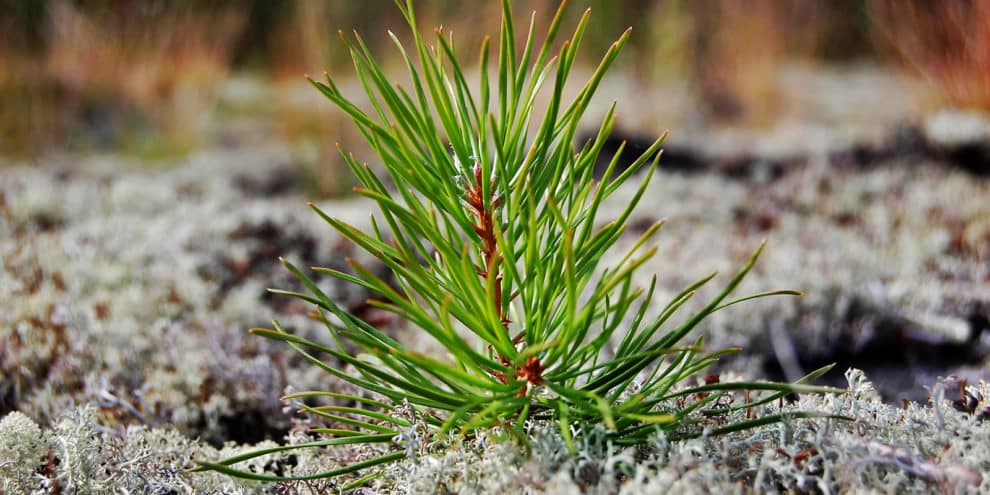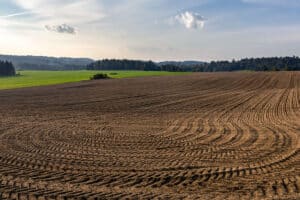Both in my job as a land agent and land manager, I often hear the excuse from older landowners that they don’t plan to reforest (that is, plant trees) on land they just harvested because “Why would I? I won’t live to see those trees mature.” After wishing them a long and healthy life, I like to give the following three reasons for why they should consider planting, even in the off-chance that they head for greener pastures before the trees can be harvested. [Disclaimer: I am neither a graduate nor registered forester. The below advice is my opinion based upon experience working in both the land management and land sales fields. Please consult a registered forester for reforestation assistance.]
- It’s Good for Your Investment Portfolio: The money that you spend on reforestation isn’t money that you’re throwing away. It’s a direct investment back into the overall land value. If it costs you $10,000 to plant trees today, you could turn around and sell your land for $10,000 more tomorrow than you could yesterday. And that investment will increase in value every day as those trees mature. Pre-merchantable tree value is a calculation I regularly make when listing land for sale to make sure the Seller is getting paid the full value for his or her timber asset at closing time. Also, productive property is much easier to sell than unproductive property. If you don’t intend to sell your property, then by planting now you will be handing down a growing investment to your heirs rather than an unproductive piece of property that will, by that time, be much more costly to put back into production. It’s good financial practice.
- It’s Good for the Land: If your land isn’t growing pine trees, it will still grow something. That something is usually briars, weeds and lower genetic hardwoods and pine that will take many more years to mature than a pine plantation. As these less productive species grow, the cost to put the property back into planted pine production increases exponentially as the regrowth becomes larger and harder to control by conventional forestry means. The growth of the natural stand will also stagnate very quickly. Unless your goal is to have a natural forest in 75 years (which I’m less optimistic that you’ll live to see), keeping timberland productive and actively managed will preserve aesthetics, reduce costs, promote wildlife habitat and protect against wildfire threats and disease, among other reasons. It’s good land management.
- It’s Good for Everyone Else: The Florida Forestry Association has a slogan that I think captures this point nicely – “Working Forests Work.” Keeping land in timber production that would otherwise be left to become an overgrown mess has many societal benefits. Forest products help produce over 5,000 items that we use in our day-to-day lives. Just in Florida, the forest industry has a $14.6B impact on the state economy and provides over 76,000 jobs. Productive forests also clean the air and water better than a stagnated natural forest resulting from a clearcut. A 2012 study by the University of Florida calculated the estimated value of managed forestland to be over $5,000 per acre when including water purification, carbon stocks, timber and wildlife. It’s good land stewardship.
It’s tough to spend the money on reforestation knowing that you might not be around to see the trees mature. But I think the reasons above make a compelling case for why it’s a good idea for your pocket, your land, and your community. I welcome more good reasons, or thoughts to the contrary. Feel free to comment.
This content may not be used or reproduced in any manner whatsoever, in part or in whole, without written permission of LANDTHINK. Use of this content without permission is a violation of federal copyright law. The articles, posts, comments, opinions and information provided by LANDTHINK are for informational and research purposes only and DOES NOT substitute or coincide with the advice of an attorney, accountant, real estate broker or any other licensed real estate professional. LANDTHINK strongly advises visitors and readers to seek their own professional guidance and advice related to buying, investing in or selling real estate.










Daniel gave some very good reasons to plant after clear cutting. I am of the opinion that a buyer may not reimburse you the total cost of reforestation in the early life cycle of a planted pine stand. The per acre cost of establishing a new stand can vary widely depending on the silviculture practices. Hand planted vs machine planted? What chemicals are used and how are they applied? And a host of other questions determine the planting cost.
My experience is the typical timberland buyer purchasing for hunting, recreation and timber income will be hesitant to pay much for planting costs until he sees a couple of years survival. As the trees grow this type buyer does start seeing the benefit of the reforestation. When they are around three years old they are much easier to see in the winter when the weeds and competition die and the green trees are obvious. At three to five years of age you will probably be able to recoup your planting cost and a return on this investment.
And as time goes on you will be real glad you did replant because you will go from a future income stream to money in the bank as you sell the trees you are growing. In my opinion if you know you are going to sell immediately after a clearcut and are willing to take clearcut prices then don’t replant. If you may own the property for three more years consider replanting. If you are going to own it five or more years definitely replant.
Good word, Fletcher. I think that’s good advice. When I work with timberland buyers and sellers, we always do stocking counts and intensive work on pre-merch stands that were just planted to get the value right. I do think you can get the money out that you put in, but you’re right, it’s harder on young stands due to the mortality risk. And, as you point out, if you can accept clear-cut prices then there’s no need to replant if you plan to sell after harvest. But even at 2 and 3 years your investment in the pine stand has grown some and I always try and account for that.
I appreciate the respectful comment. The alternate opinion is worth a reader’s consideration. Thank you.
Reforestation is what I did 13 years ago on a 40 acre plot in another state. I purchased this land more than 30 years ago but did not know any better until I had the property evaluated and cleaned up after 15 years of ownership. Now , I know, instead of my dads old way of just letting the seeds reseed, I had small pines planted and that was 2014. Instead of 30 years to 35 years to harvest the pines, I have another 10 years left according the forestry company . Two grands will be ready to further their education and they will need a little spending money for them. I co-own some heir property with my sibling and have tried to educate them about reforestation to no avail. Thanks for your information and looking to read more of your articles.
Pat, glad to hear your 40 acres is doing well. Thanks for the comment. I enjoy reading stories from people that are good stewards of their land. Sounds like you’ve got good assistance with your forester as well. Best of luck with your sibling. Your forester should be able to provide you with a good investment analysis on money that you spend on reforestation. Breaking things down to a percentage return on investment may help you in your case to replant your heir property if you haven’t already done so.
There are financial assistance opportunities through USDA-NRCS and usually some state forestry agencies as well that can help tremendously with the out-of-pocket expenses of site preparation and reforestation as well as management activities once the stand is established. Makes reforestation a nobrainer!